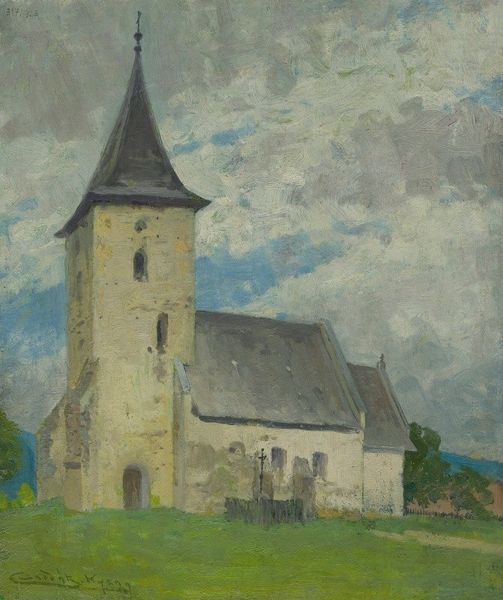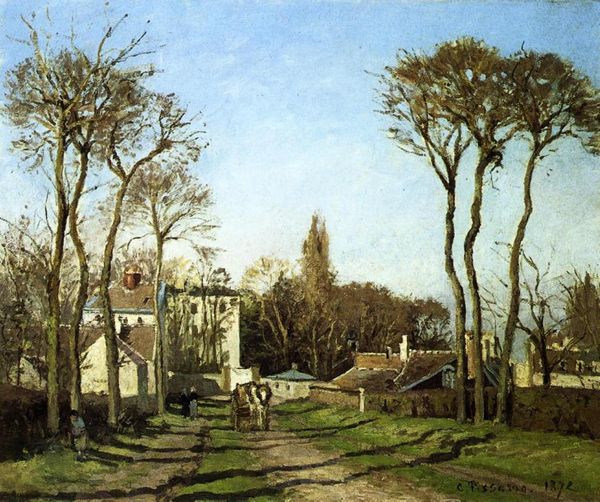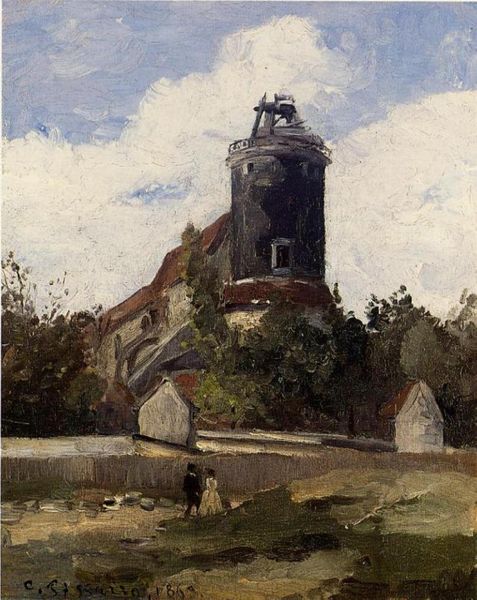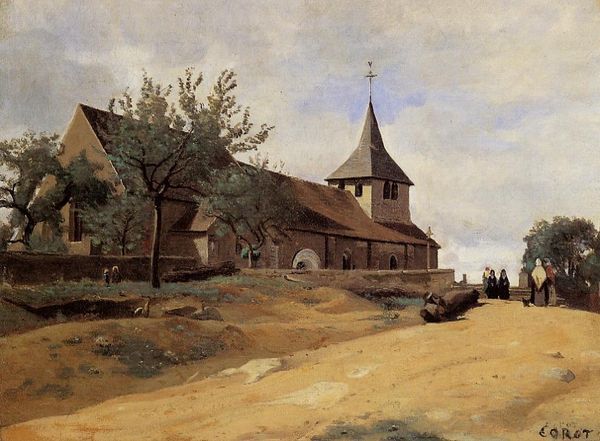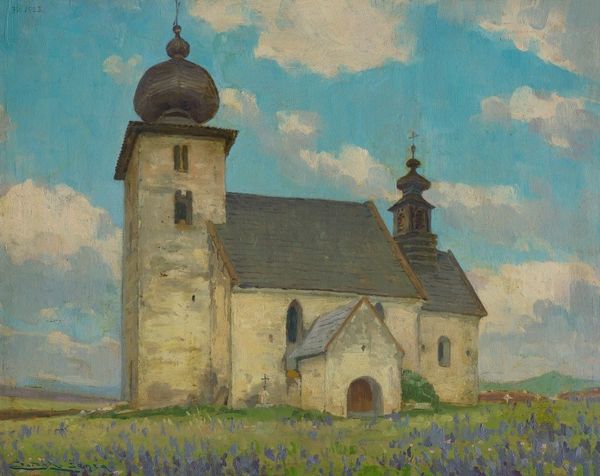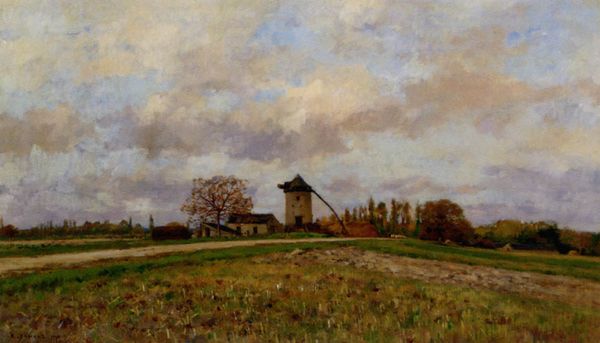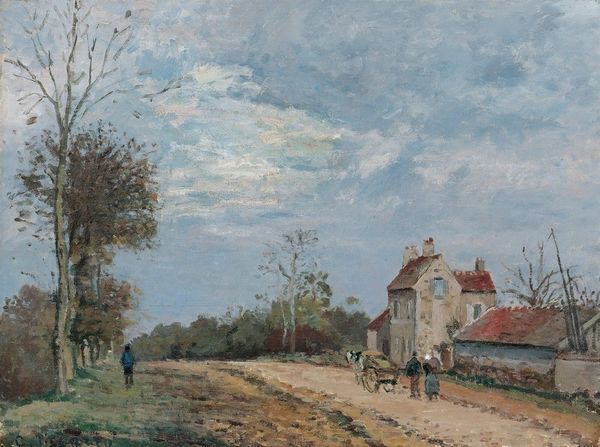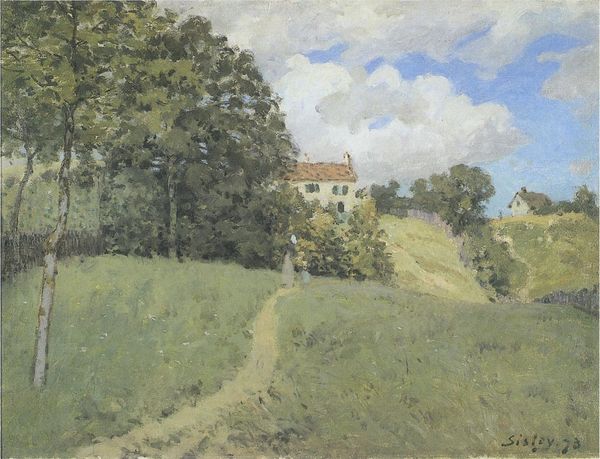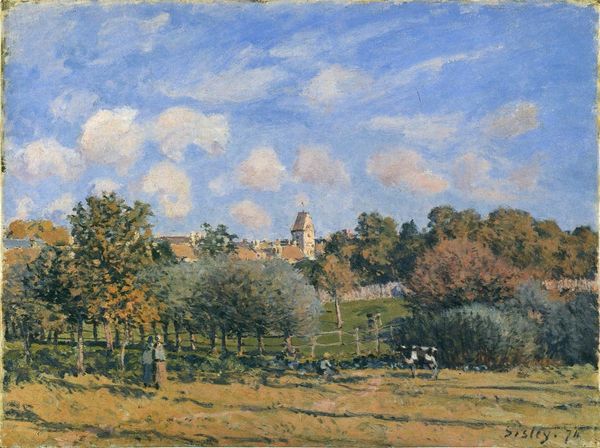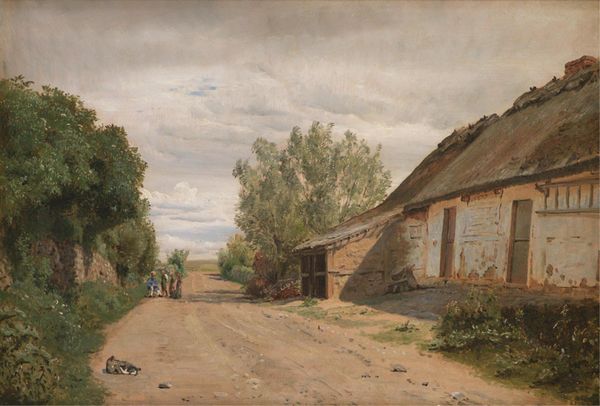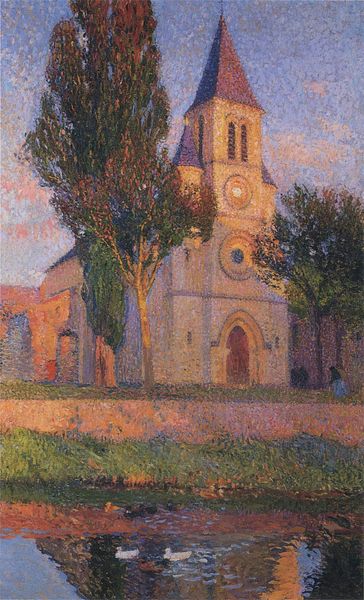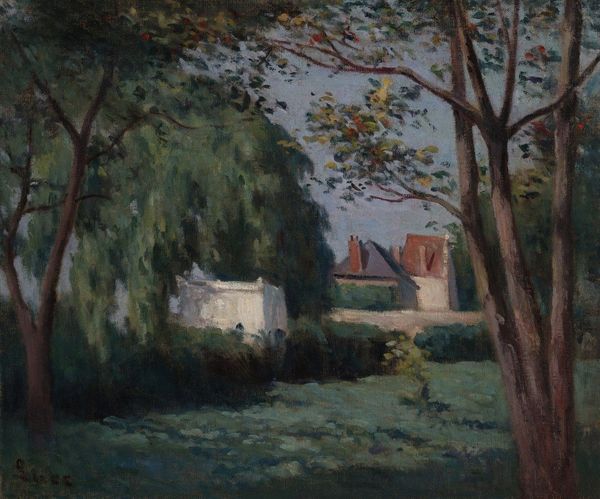
painting, plein-air, oil-paint
#
painting
#
impressionism
#
plein-air
#
oil-paint
#
landscape
#
impressionist landscape
#
oil painting
#
cityscape
#
academic-art
Copyright: Public domain
Curator: What a subtly beautiful painting! The textures of the trees almost obscure the chapel. Editor: Indeed. This oil painting is Claude Monet's "The Chapel Notre-Dame de Grace at Honfleur", completed in 1864. One is immediately struck by the tranquility; there’s an unassuming, almost mundane quality to it. Curator: Yet, Monet positions this religious structure within a landscape already charged with the symbolic weight of its relationship to the community and broader socio-political order. How might its significance change once this symbol of spiritual power is rendered so delicately, so humanly imperfect, nestled amidst those imposing trees? Is it commentary, or simply observation? Editor: Perhaps both. Let's consider the brushstrokes. Note how Monet uses short, broken strokes to capture the light filtering through the leaves. The texture he creates with those fragmented marks animates the scene. The almost stippled way the chapel's stone facade is rendered… there's a dissolution of form, foreshadowing his later fully Impressionistic style. Curator: Absolutely. He seems already preoccupied with representing sensory experiences and subjective realities of vision over objectively-defined spaces. This chapel carries echoes of deeply unequal access to grace and power, shaping identities along the faultlines of faith, class, and perhaps even gender within its surrounding communities. To flatten it aesthetically speaks volumes, right? Editor: Certainly, although consider that Monet balances these progressive aspects with elements of academic training, particularly in the overall composition and spatial arrangement. Look at how the receding plane draws the eye toward the water. The structure helps define the space. The atmospheric perspective provides a sense of depth and scale... He builds a world using only a few restrained, cool tones. Curator: So even while the technique moves away from tradition, it is constrained by a compositional conservatism, a reaching back as much as a lunge forward. It represents, perhaps, not just a visual shift, but an individual’s own grappling with a changing social structure in the moment. Editor: A nuanced transition indeed! Seeing both tradition and innovation at play gives a richer perspective on this transitional piece within Monet’s broader trajectory. Curator: And in the context of France, transitioning, too, through radical cultural and social changes! Fascinating.
Comments
No comments
Be the first to comment and join the conversation on the ultimate creative platform.
